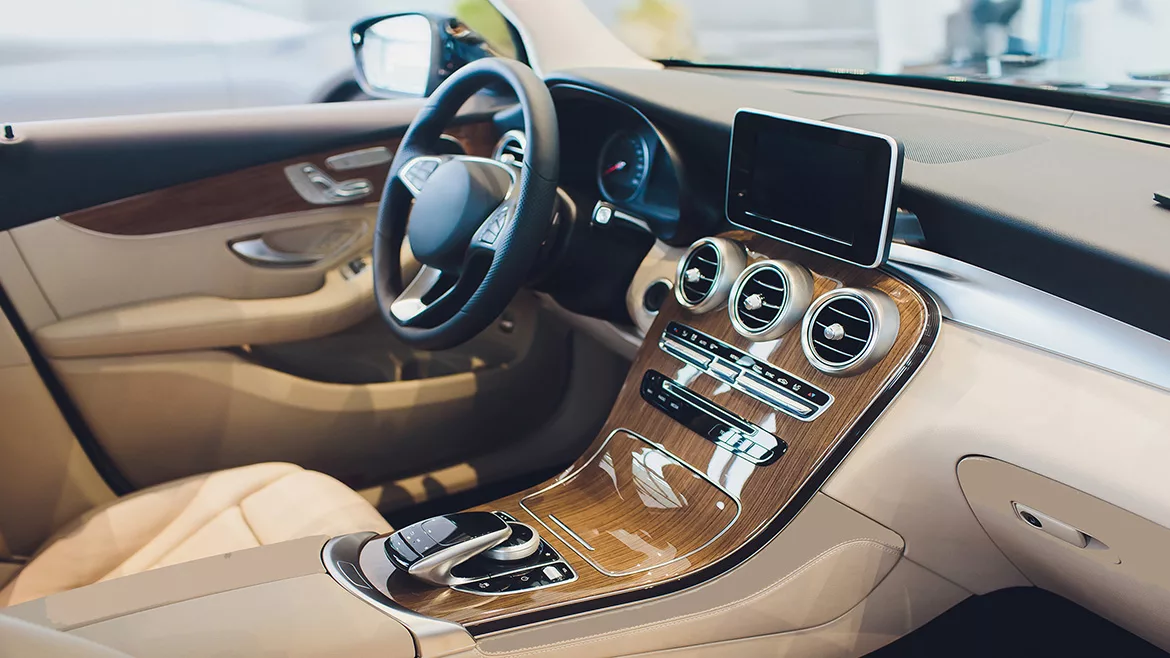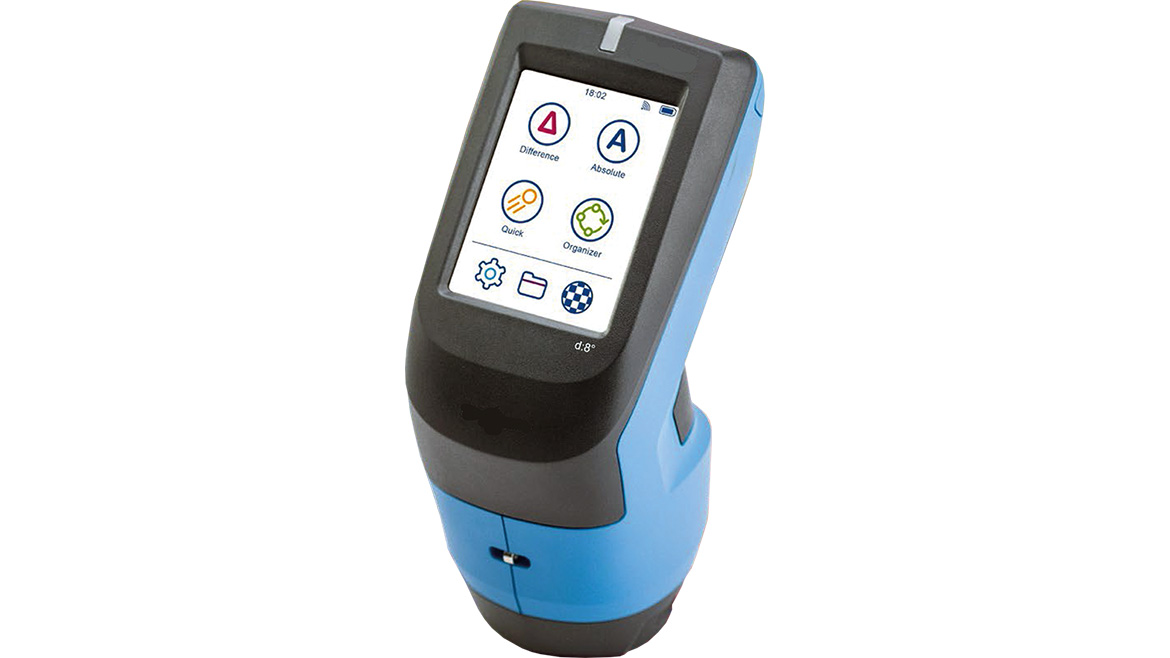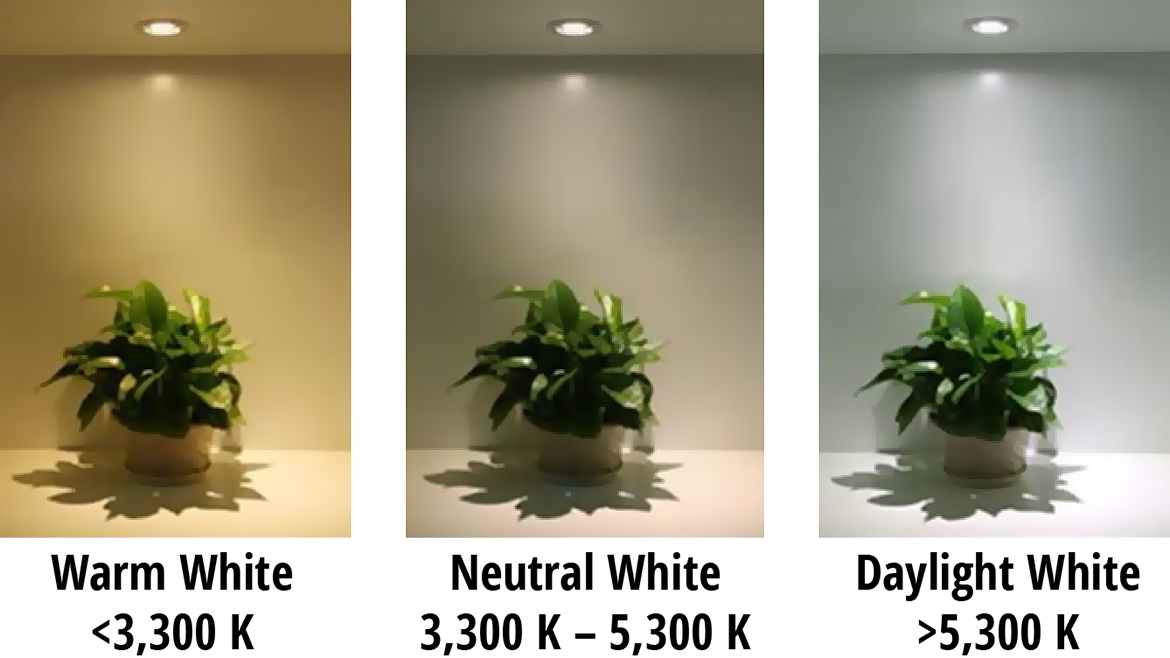Automotive Interior Surface Testing
Color and Appearance

Courtesy of BYK Gardner.
Color and appearance are vital factors influencing consumer perception of automotive interiors. They contribute to the emotional and psychological response of potential buyers, affecting their initial impressions and long-term satisfaction with the vehicle. A harmonious color palette with uniformity in the gloss, color and texture of multicomponent products creates an atmosphere of luxury, comfort and modernity. Conversely, inconsistent color matching, uneven textures or visible defects can convey a sense of poor craftsmanship and subpar quality. Therefore, achieving the desired color, gloss and texture is critical for brand image, customer loyalty and market success.
Challenges in Maintaining Desired Standards
Several challenges exist in maintaining consistent color and appearance harmony across different surfaces within an automotive interior.
- Material variability — Automotive interiors feature a wide array of materials, such as leather, plastic, fabric and metal, each with its own unique optical properties. These materials may exhibit distinct behaviors under various lighting conditions and viewing angles, making color matching and appearance consistency complex.
- Environmental factors — Automotive interiors are exposed to varying environmental conditions, including sunlight, temperature fluctuations and humidity. These factors can cause color fading, material degradation and changes in appearance over time.
- Human perception — Human perception of color and appearance is subjective and influenced by individual preferences and cultural factors. Achieving universal satisfaction requires striking a balance between aesthetic ideals and mass appeal.

- Manufacturing processes — Different manufacturing processes, such as injection molding, fabrics, carpet and assembly, can introduce variations in color, appearance and texture. Ensuring consistency across automotive manufacturing processes is a considerable challenge.
Testing Methods for Color and Appearance Assessment
A range of testing methods is employed in the automotive industry to assess color and appearance attributes accurately and consistently.
- Spectrophotometry — Spectrophotometers are used to measure the spectral reflectance of materials. This data is analyzed to quantify color attributes, including hue, saturation and brightness. Spectrophotometry enables objective color analysis and comparison between samples.

- Digital imaging — High-resolution digital imaging captures intricate surface details and color information. Image analysis software can quantify attributes like texture uniformity, grain consistency and color distribution.
- Angle-dependent measurement — Some surfaces exhibit different appearances at various viewing angles. Gonio-spectrophotometers measure color and appearance attributes at multiple angles, providing a comprehensive view of how surfaces change under differing perspectives.
- Human evaluations — Despite the objective nature of instrumental measurements, human evaluations remain indispensable. Trained experts assess samples under controlled lighting to detect subtleties that can be incorporated into the measurement tolerancing of an instrument to ensure harmony.
- Durability testing — Accelerated aging tests subject samples to environmental stresses like UV exposure, temperature cycling and abrasion. Monitoring color and appearance changes over time helps predict long-term performance.
- Lighting simulation — Controlled lighting environments simulate various lighting conditions, such as daylight, incandescent and fluorescent lighting. This helps evaluate how materials and surfaces appear under different lighting sources, revealing potential color mismatches or undesirable gloss effects.

Industry Standards and Regulations
To maintain consistency across the automotive industry, various standards and regulations guide color and appearance evaluation:
- ISO 3664 — This standard specifies viewing conditions for color matching and assessment. It defines standardized lighting conditions to ensure accurate color appraisal.
- ASTM D1729 — ASTM's standard outlines procedures for visual evaluation of color differences, especially under different light sources.
- VDA 280 — Used in the automotive industry, this guideline sets requirements for color consistency in interior parts by defining color tolerances and measurement methods.
- SAE standard — SAE’s standard defines terms related to automotive interior and exterior colors and appearance. It aids in establishing common language and understanding across the industry.
Color and appearance are critical components of automotive interior design, influencing customer perception, brand image and market success. Maintaining consistent color and appearance standards is a complex endeavor due to material variability, environmental challenges and human perception factors. Various testing methods, including spectrophotometry, lighting simulation, digital imaging and human evaluations, help ensure that automotive interior surfaces meet desired visual attributes. By adhering to industry standards and regulations, automakers can deliver interiors that captivate customers, foster loyalty and reflect the excellence of their craftsmanship. As technology advances and consumer expectations evolve, the role of color and appearance testing will become an even more critical and essential aspect of automotive interior design and quality assurance.
Looking for a reprint of this article?
From high-res PDFs to custom plaques, order your copy today!







